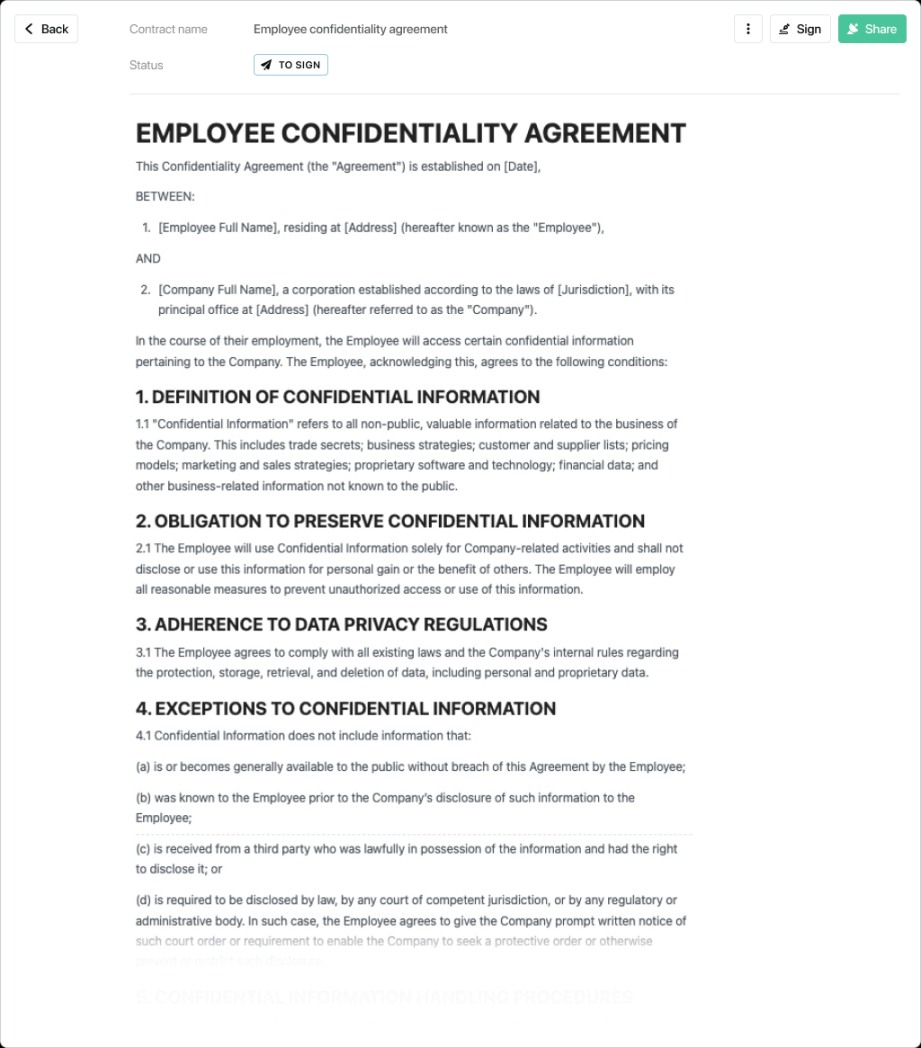Understanding the Importance of Confidentiality
A well-crafted employee confidentiality agreement is a vital legal document that safeguards sensitive information within an organization. It establishes clear boundaries and expectations regarding the handling of confidential data, protecting both the company’s proprietary interests and the employee’s professional reputation.

Key Components of a Professional Confidentiality Agreement
To ensure the effectiveness of your confidentiality agreement, it is essential to include the following key components:
Identification of the Parties
Clearly state the names and addresses of both the employer and the employee. This information should be presented in a formal and professional manner.
Definition of Confidential Information
Provide a comprehensive definition of confidential information that encompasses all relevant data, including trade secrets, customer information, financial data, and any other sensitive materials. Be specific and avoid vague or ambiguous language.
Scope of the Agreement
Specify the duration of the agreement and the circumstances under which it may be terminated. Consider including a provision that extends the agreement beyond the employee’s employment term to protect confidential information that was disclosed during their tenure.
Obligations of the Employee
Outline the employee’s obligations regarding the handling of confidential information. These obligations may include:
Maintaining confidentiality: The employee must keep all confidential information secret and refrain from disclosing it to unauthorized individuals.
Non-Compete and Non-Solicitation Clauses (Optional)
Depending on the nature of the business and the employee’s role, you may consider including non-compete and non-solicitation clauses. These clauses can help protect the company’s competitive advantage by restricting the employee’s ability to work for competitors or solicit the company’s customers or employees.
Confidentiality Violations and Remedies
Specify the consequences of a confidentiality violation and the remedies available to the employer. These may include monetary damages, injunctions, and other legal actions.
Governing Law and Jurisdiction
Indicate the governing law that will apply to the agreement and the jurisdiction in which any disputes will be resolved.
Design Elements for Professionalism and Trust
To convey professionalism and trust, consider the following design elements when creating your confidentiality agreement:
Clear and concise language: Avoid legal jargon and use plain language that is easy to understand.
Conclusion
A well-crafted employee confidentiality agreement is essential for protecting sensitive information and maintaining a competitive advantage. By carefully considering the key components and design elements discussed in this guide, you can create a professional and effective document that will serve the needs of your organization.